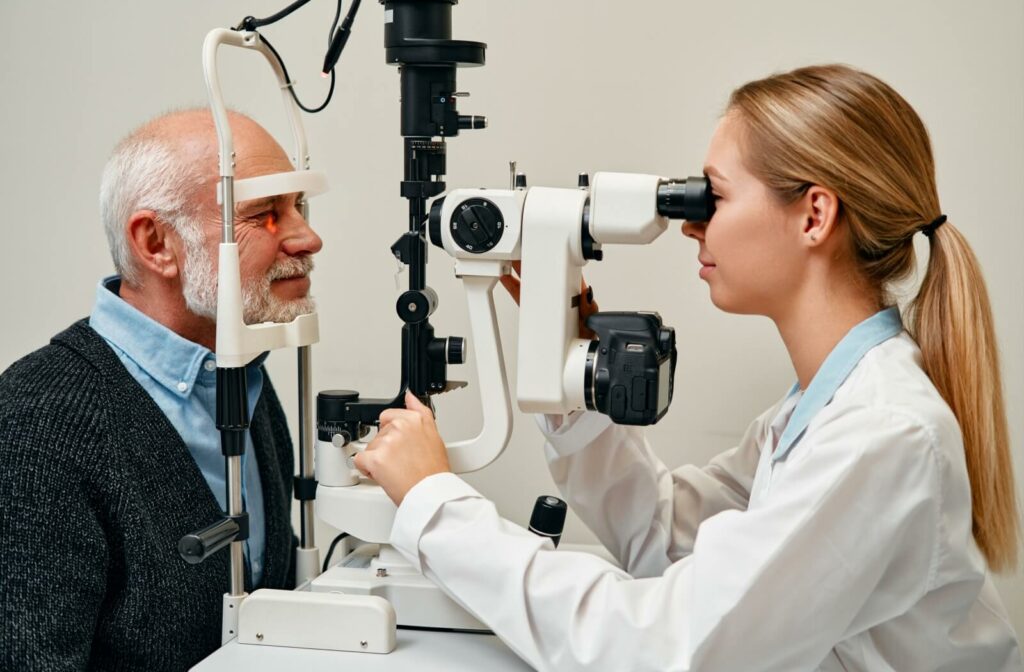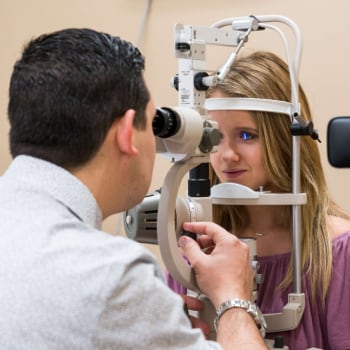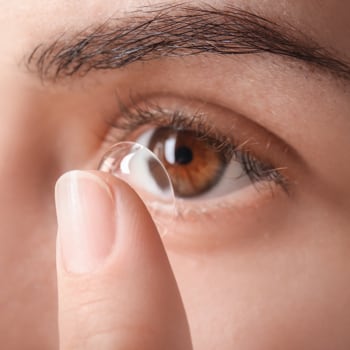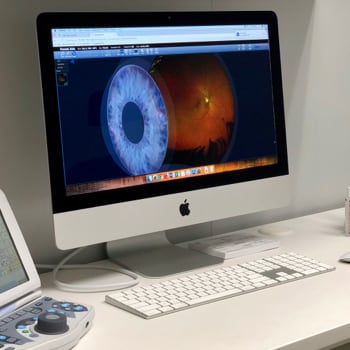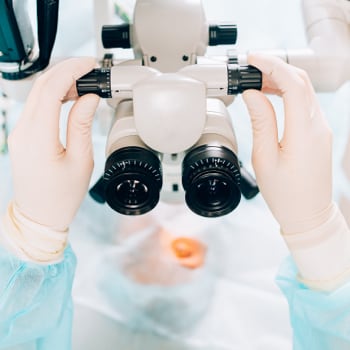Seeing clearly is integral to daily life, and it’s essential to know about eye health concerns that could compromise it. Cataracts and glaucoma are among the most common vision-related issues, though they differ greatly in terms of origin, symptoms, and treatment strategies.
Glaucoma is a group of eye conditions that can go undetected until serious eye damage occurs. Cataracts typically develop gradually over time, causing cloudy vision that can be corrected with safe and effective surgery.
At Great Hills Eye Care, we’re dedicated to helping you protect your eye health through comprehensive eye exams and tailored treatment and advice.
We’ll explore both in more detail below because each of these eye conditions can disrupt your vision and daily life.
Understanding Glaucoma
Glaucoma is a collection of eye diseases that damage the optic nerve. It’s typically caused by increased intraocular eye pressure (IOP), except for cases of normal-tension glaucoma. If left untreated, glaucoma could lead to gradual vision loss. It usually develops slowly and may not show noticeable signs until irreparable damage is done to the optic nerve.
Common Glaucoma Types
There are many types of glaucoma, but a few of the common ones are:
- Primary open-angle glaucoma: This common type occurs when eye drainage canals become less effective over time, resulting in increased IOP.
- Angle-closure glaucoma: This less common but more severe variant occurs when the iris obstructs the eye’s drainage angle, leading to a sudden pressure rise. It requires immediate intervention to prevent vision loss.
- Normal-tension glaucoma: Optic nerve injury happens even though the eye pressure is within normal limits.
- Secondary glaucoma: This type is brought on by another eye condition, such as trauma, inflammation, or adverse medication effects.
The comprehensive eye examinations we provide at Great Hills Eye Care are vital for early detection and monitoring, as vision loss due to optic nerve damage is irreversible. If you’re experiencing any symptoms of glaucoma, don’t wait. Contact us to book an exam today.
Understanding Cataracts
Cataracts are a condition in which the eye’s lens becomes cloudy, leading to blurred or dim vision. They’re typically an age-related condition and develop slowly. Over time, lens proteins decompose and clump together, creating cloudy areas that obstruct clear vision.
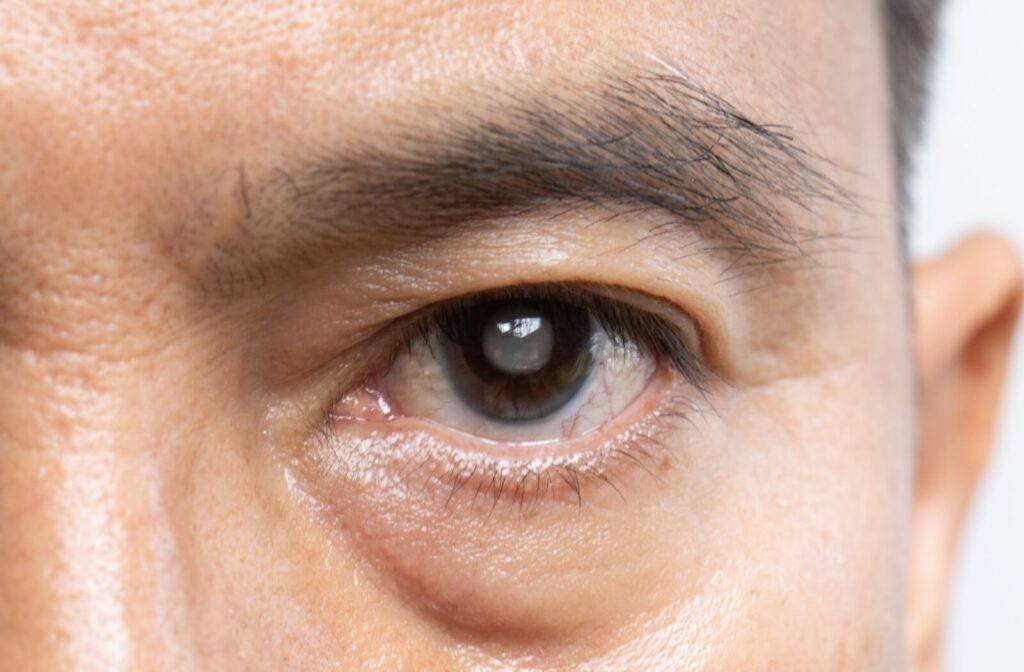
Causes of Cataracts
While age is the most common cause of cataracts, other risk factors can increase the risk of developing them in one or both eyes.
- Long-term UV exposure
- Medical conditions like diabetes and specific medications, like corticosteroids
- Eye injury or trauma
- Family history and genetics
- Environmental factors like smoke, air pollution, or industrial chemicals
How Are Cataracts & Glaucoma Different?
While glaucoma and cataracts share some similarities, such as being generally age-related and typically progressing slowly, they are distinct eye conditions.
Causes
Glaucoma is typically triggered by elevated IOL and optic nerve damage. Cataracts result from the natural clouding of the eye’s lens caused by age.
Symptoms
Glaucoma often displays no symptoms in the early stages. But as the disease progresses, symptoms can include peripheral vision loss, eye discomfort, and blurred vision. Cataracts symptoms are usually blurred or cloudy vision, trouble seeing at night, sensitivity to light, and faded colors.
Progression
Glaucoma progresses slowly and causes irreversible vision loss, starting with the peripheral vision. Cataract progression is also slow but can typically be resolved with surgery.
Treatment
Glaucoma can be managed with eye drops, laser treatments, or surgery to lower eye pressure. Ultimately, cataract surgery is the only “fix” for a cloudy lens. But until cataracts affect your daily life, your eye doctor can help you manage it with prescription eyeglasses, and you can try things like brighter lights when reading.
Glaucoma & Cataracts Shared Risk Factors
While cataracts and glaucoma are very different, they share several risk factors:
- Age: These conditions commonly occur in persons over 60
- Family history: Genetics influence the risk for both diseases
- Medical conditions: Conditions like diabetes augment the risk for both
- UV exposure: Extended exposure to the sun can contribute to cataract formation and may affect glaucoma risk.
Preventing Vision Loss from Cataracts & Glaucoma
We can’t change our family history, and we’re all getting older. So, some risk factors are unavoidable. But there are still things that you can do to minimize your risk of getting either of these vision-threatening eye conditions.
- Stick to a healthy diet: Foods high in antioxidants, such as leafy greens, fruits, and berries, benefit eye health. And fish rich in omega fatty acids can also help promote good eye health. Plus, a diet rich in omegas can help alleviate dry eye symptoms.
- Control medical conditions: Because things like diabetes or high blood pressure can increase the risk of eye conditions like glaucoma, managing them can help reduce your risk.
- Schedule regular eye exams: You may not be able to 100% prevent these eye conditions, but early detection is key to managing them and protecting your vision.
Healthy Eyes with Great Hills Eye Care
Understanding the differences between glaucoma and cataracts helps you take control of your eye health. At Great Hills Eye Care, we offer comprehensive services at 3 locations to help safeguard your vision. Call us today to book an appointment, and let us help you maintain your clear, healthy vision for many more years to come.

